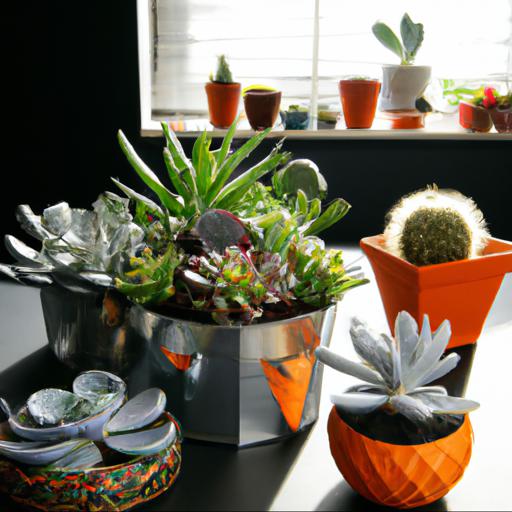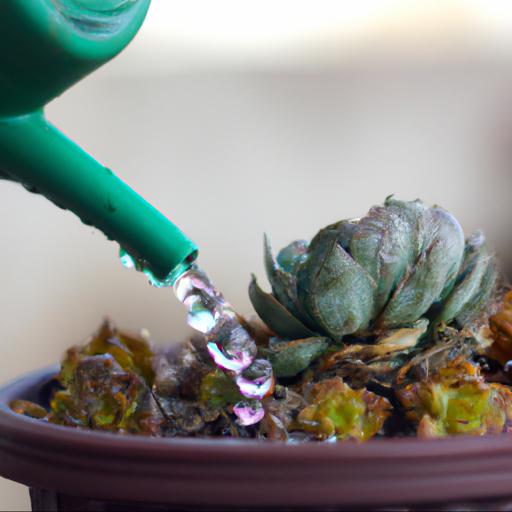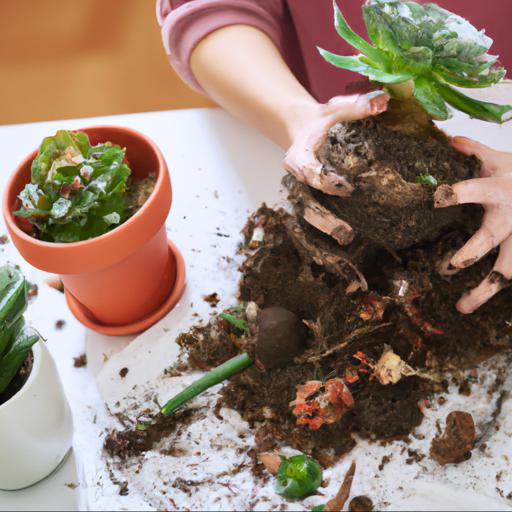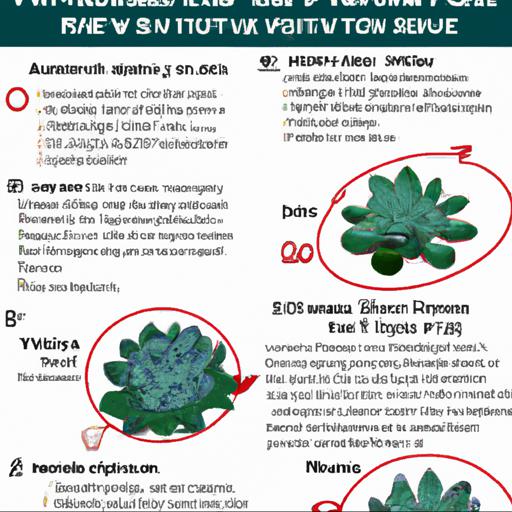Are you looking for a comprehensive guide on how to care for succulents? If so, you’ve come to the right place! This succulent care guide will provide you with all the information you need to keep your succulents healthy and thriving.
You’ll learn how to pick the right succulents for your environment, how to water and fertilize them, and how to troubleshoot common problems. With this guide, you’ll be able to provide your succulents with the care they need to stay healthy and beautiful.
How to choose the right succulent for your home

Having succulents in your home or outdoor space can provide a beautiful, low-maintenance and sustainable way of making your home look great. However, all succulents are not made equal.
Depending on the environment in your home and the care you are willing to provide, there are certain succulents that will work best for you. To make sure you choose the perfect succulent for you, use this guide to understand the different types, each of their individual needs, and how best to care for them. When choosing a succulent, the first thing you will want to consider is the type of plant.
There are hundreds of varieties of succulents, from the popular cacti to moon-shaped aloes, from the delicate smelling jades to the fleshy sedums. Think about the look you are going for.
Do you want an elaborate cascade of ornamental cacti or a series of miniature potted aloes? Make sure you research the varieties you are considering to make sure you understand their individual needs and can provide them with the care they need. Once you’ve chosen the variety of succulent perfect for your home, you’ll want to make sure you give it the right environment.
Succulents typically enjoy bright, indirect light and dry, sandy soil that is well-draining. Keep the soil dry between waterings and make sure you aren’t overwatering—succulents store water inside their leaves and can easily become overwatered if you’re not careful. Additionally, be sure to check for any pests that may be plaguing your succulent and take the necessary steps to get rid of them.
Finally, don’t forget to tend to your succulent. Even the most low-maintenance succulent needs a little love to thrive.
Make sure you’re trimming any dead or damaged leaves to keep your succulent in perfect condition. With a little bit of effort and knowledge, you can enjoy the perfect succulent in your home.
Watering and fertilizing succulents

When it comes to tending succulents, proper watering and fertilizing is essential for happy, healthy plants. Many novice succulent growers worry about over- or under-watering their plants, or using too much or too little fertilizer.
Don’t fret – succulent care is straightforward and easy to master with a little bit of guidance. The key to success is understanding your succulent’s individual needs. Different plants require varying levels of water and fertilizer – and it’s up to you to learn how best to tend to your specific species.
Generally speaking, cacti and desert succulents need more water than many other succulents. For instance, many “living stones” require almost no water at all and are sensitive to over-watering, while a Lithops plant needs more frequent and deeper hydration.
As for fertilizing, avoid over-fertilizing but make sure to use a balanced “cactus & succulent” fertilizer for best results. Watering succulents can be tricky, but there are some helpful tips to keep in mind. The most common mistake is to give succulents too much water.
Many succulents thrive with infrequent and light, deep watering. A great rule of thumb is to wait until the soil is completely dry before giving your plant more hydration. When you do water, make sure that you saturate the soil to a depth of 1-2 inches.
To get an idea of how often to water, think about the level of sunlight and the moisture levels of the environment. For instance, plants in lower light and more humid environments will need less frequent watering.
As you can see, proper watering and fertilizing is an important part of tending to your succulents. To master succulent care, it is essential to understand the needs of your specific plants and follow the general guidelines laid out here. With the right approach, your plants will remain happy and healthy for years to come.
Common problems and solutions for succulent care

Succulents are a popular choice for both in- and outdoor gardens. Their simplistic beauty, low-maintenance care requirements, and ability to thrive with minimal attention make them a great choice for beginner gardeners. However, even the most experienced succulent growers will experience problems from time to time.
This succulent care guide will offer tips on how to identify, prevent, and resolve common problems you may encounter on the road of succulent keeping. First and foremost, recognizing an issue is key to dealing with it successfully.
Knowing what’s normal for your particular species is the easiest way to distinguish between healthy and unhealthy plants. Be sure to act quickly to address any problem so your plants can recover while they’re still strong.
Common issues with succulents include rotting leaves, pests, under- or over-watering, and sunburn. Rotting leaves come from either too much water or a lack of sunlight. To prevent rotting, be sure to water your succulents deeply but infrequently, and ensure they’re in a location that gets ample light.
Pests are another issue, and can cause yellowing of the foliage, white dots on the leaves, or webbing. These can be treated with insecticidal soap or neem oil. Over- and under-watering are both preventable, but it’s important to establish a schedule for when to water.
General guidelines are to allow the soil to dry out and water until it drains out of the bottom of the container, then wait for the soil to traverse. Burning can occur for succulents that are not endemic to the climate, or if they’re not hardy enough for temperatures below freezing.
The best way to address this is to consider the climate where they live and adjust lighting accordingly. If you’re having trouble with your succulents, this guide should have given you an understanding of common problems and how to address them. By understanding the needs and particularities of each species, you’ll be able to properly care for your succulent plants and ensure they will thrive in the environment you provide.
Creative ways to display succulents in your home
This article will offer a succulent care guide and creative ways to display succulents in your home. Succulents are becoming increasingly popular plants to keep indoors, due to their low maintenance requirements, beautiful aesthetic, and copious variety of species and cultivars.
Succulents have evolved to store moisture efficiently, with several easily identifiable characteristics such as thick, fleshy leaves and short stems designed to minimise moisture loss. This makes them ideal plants for beginners, as they require less frequent watering minutes. When caring for succulents at home, it is important to start with the basics.
The essential element for all succulent growth is ample sunlight, which can be provided by a south-facing window or even a grow light. When it comes to watering, succulents require the ‘soak and dry’ technique, meaning that soil should be completely soaked, but allowed for a sufficient period of time for the soil to dry completely before next watering. Additionally, succulents require well-draining soil, and can tolerate lower temperature drops and higher temperatures.
Now let us get creative with displaying succulents around your home! Hanging pots are a simple but effective way to display succulents and allow them to spread across the walls, much like ivy on a trellis.
Smaller table-top displays such as clear fishing floats, with either air plants or succulents growing inside, are great decorative pieces which can be suspended with twine. Growing them in vertical wall frames is a great way to show off an array of succulents in a way that is incredibly attractive. Additionally, succulents can be combined with other plants for distinctive displays, or whimsically placed among various glass containers or terrariums.
Overall, succulents are easy to care for and make great additions to any home. With their low maintenance requirements and long-lasting beauty, succulents come in many varieties,sure to meet the needs of any gardener.
Get creative with displaying your succulents around your home and let them speak for themselves.
Our video recommendation
Conclusion
This succulent care guide provides helpful tips for keeping succulents healthy and beautiful. Learn how to water, fertilize, and propagate succulents, as well as how to identify and treat common diseases.
With the right care and attention, succulents can thrive in any home.
FAQ
What are the best soil types for succulents?
The best soil types for succulents are well-draining soils with a slightly acidic pH level. A cactus mix or a combination of potting soil, perlite, and sand is ideal.
How often should succulents be watered?
Succulents should be watered about once a week, allowing the soil to dry out completely between waterings.
How much sunlight do succulents need?
Succulents need bright, indirect sunlight for at least 4-6 hours a day.
How can I tell if my succulent is getting too much or too little water?
To tell if your succulent is getting too much or too little water, look for signs of distress such as wilting, yellowing, or browning of leaves, or soft and mushy stems. If the succulent is getting too much water, the leaves may also be swollen and the roots may be rotting. If the succulent is getting too little water, the leaves may be shriveled and the soil may be dry.
What are the signs of an unhealthy succulent?
Signs of an unhealthy succulent include wilting, yellowing, browning, and drooping leaves, as well as stunted growth. Other signs include a lack of flowers, dry and brittle leaves, and a soft, mushy stem.
How can I propagate succulents?
To propagate succulents, you can use stem cuttings or leaf cuttings. For stem cuttings, cut a stem from the parent plant and let it dry out for a few days. Then, place the stem cutting in a pot with well-draining soil and water it lightly. For leaf cuttings, gently twist a leaf from the parent plant and place it on top of the soil. Water it lightly and keep it in a warm, sunny spot.

